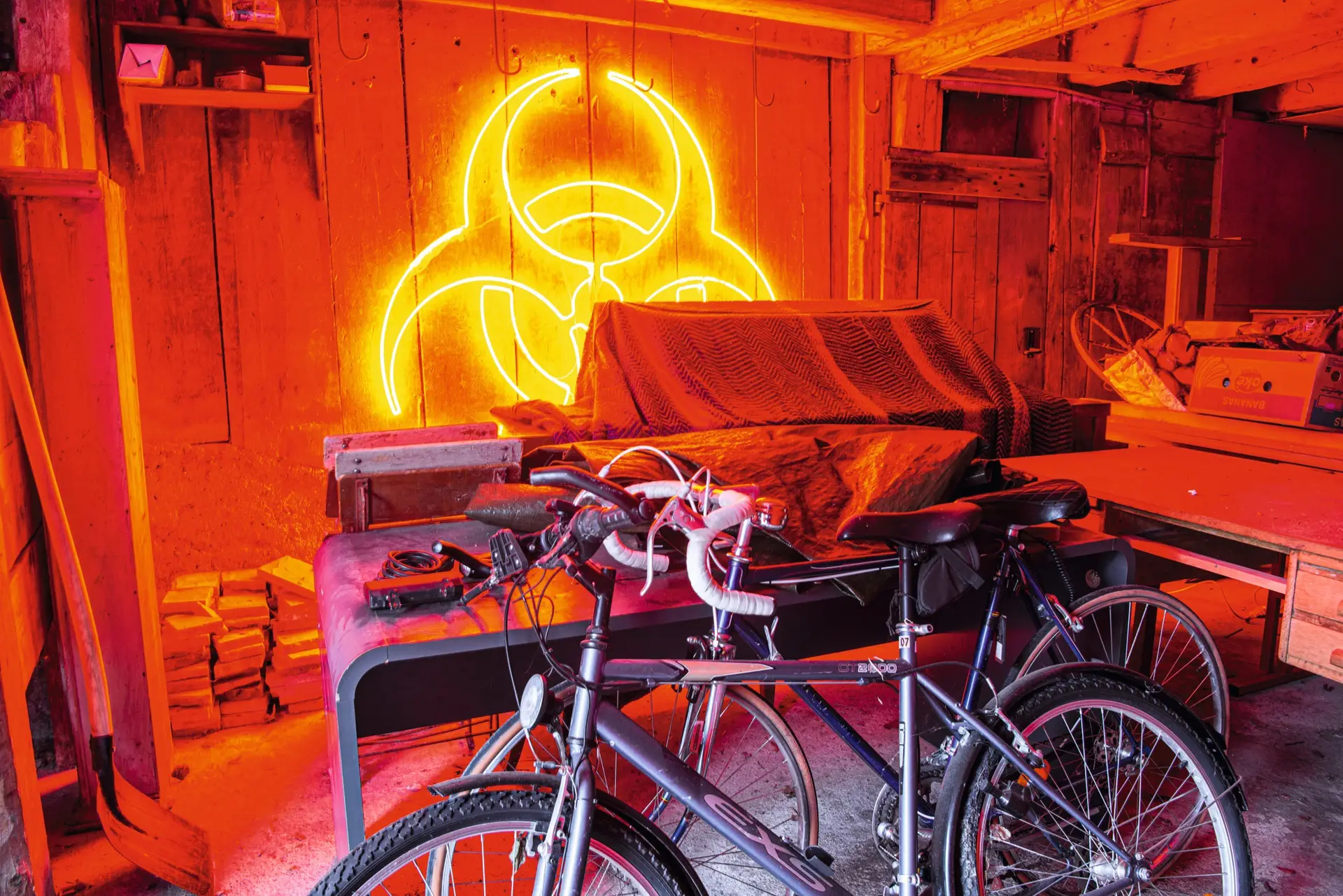
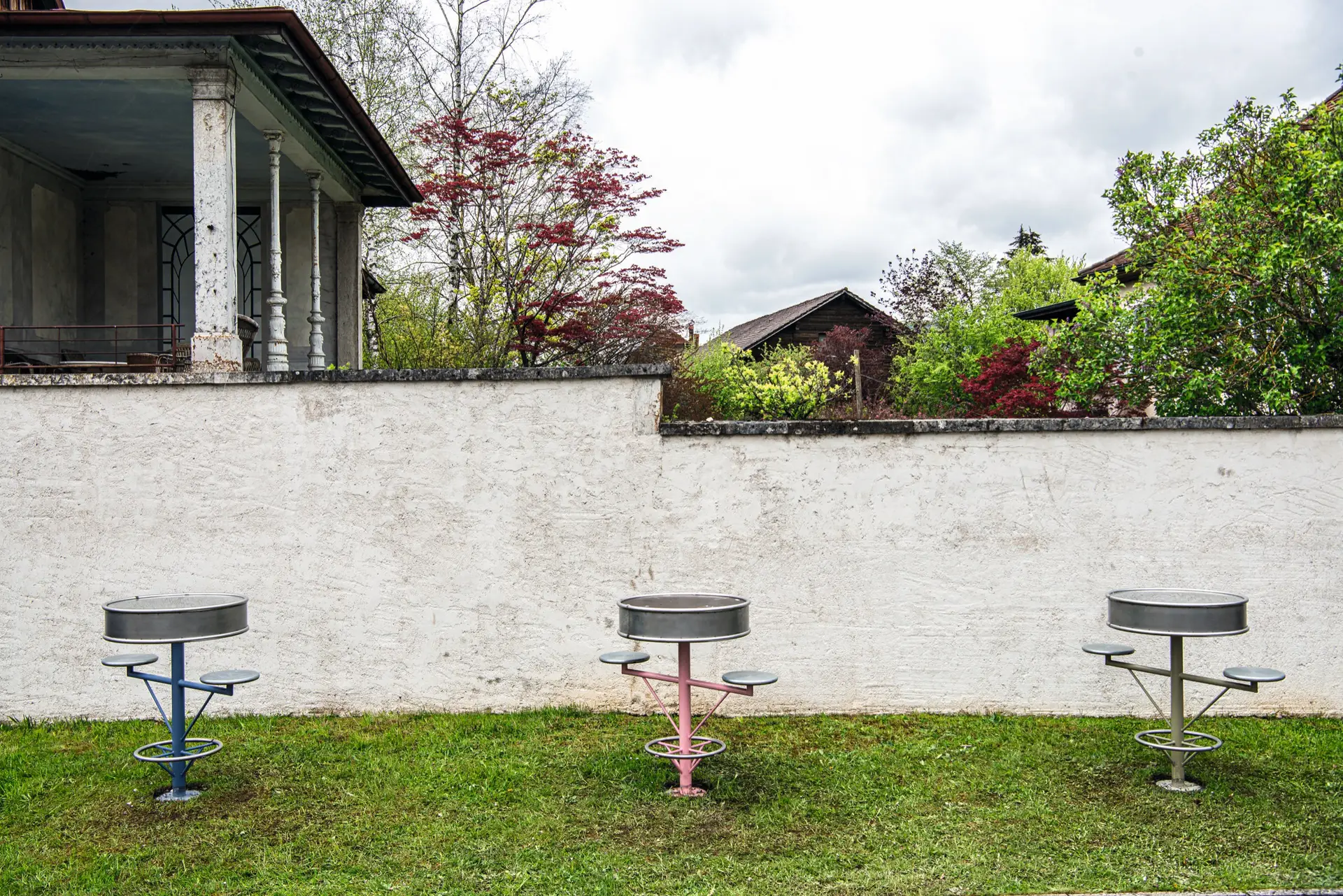
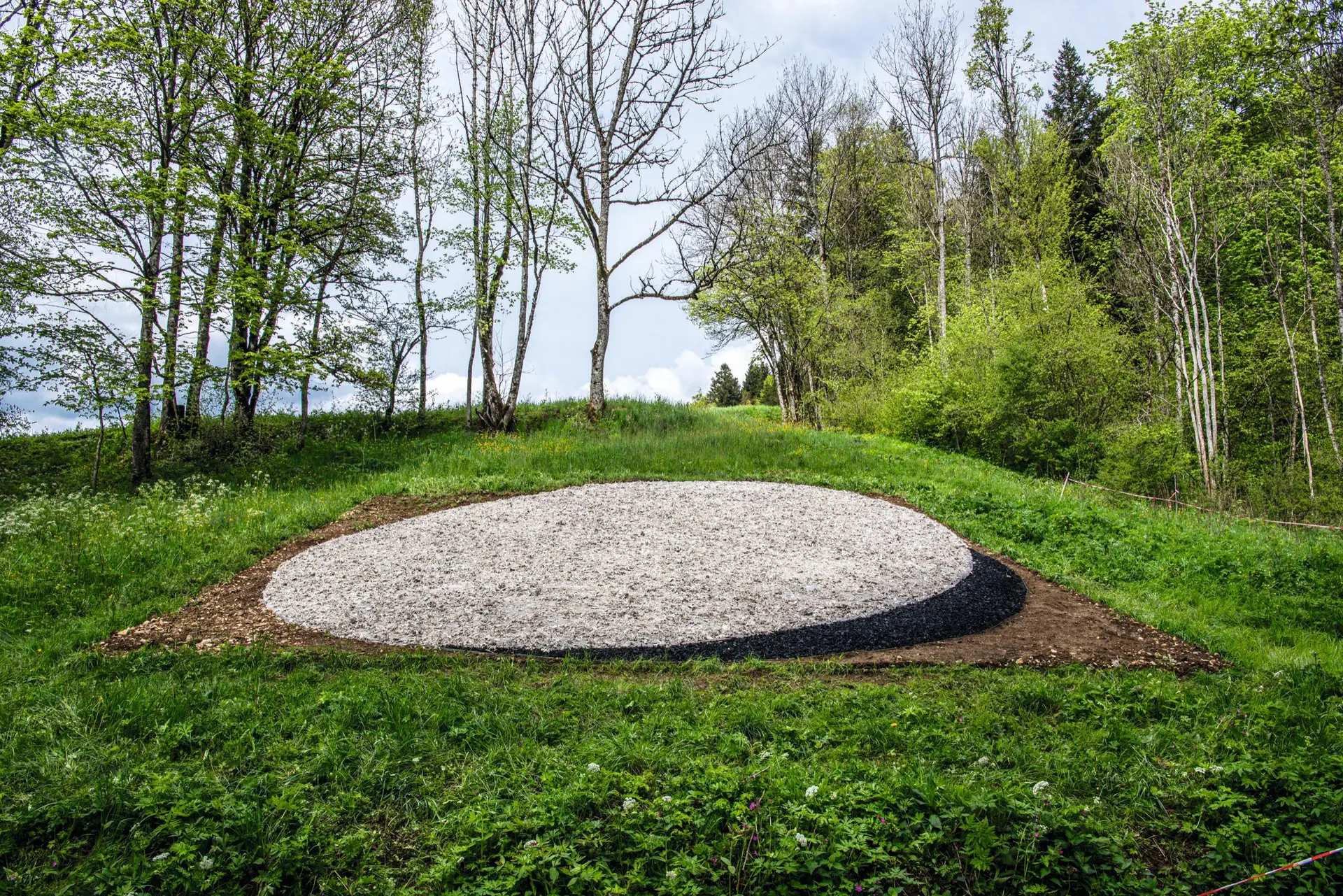
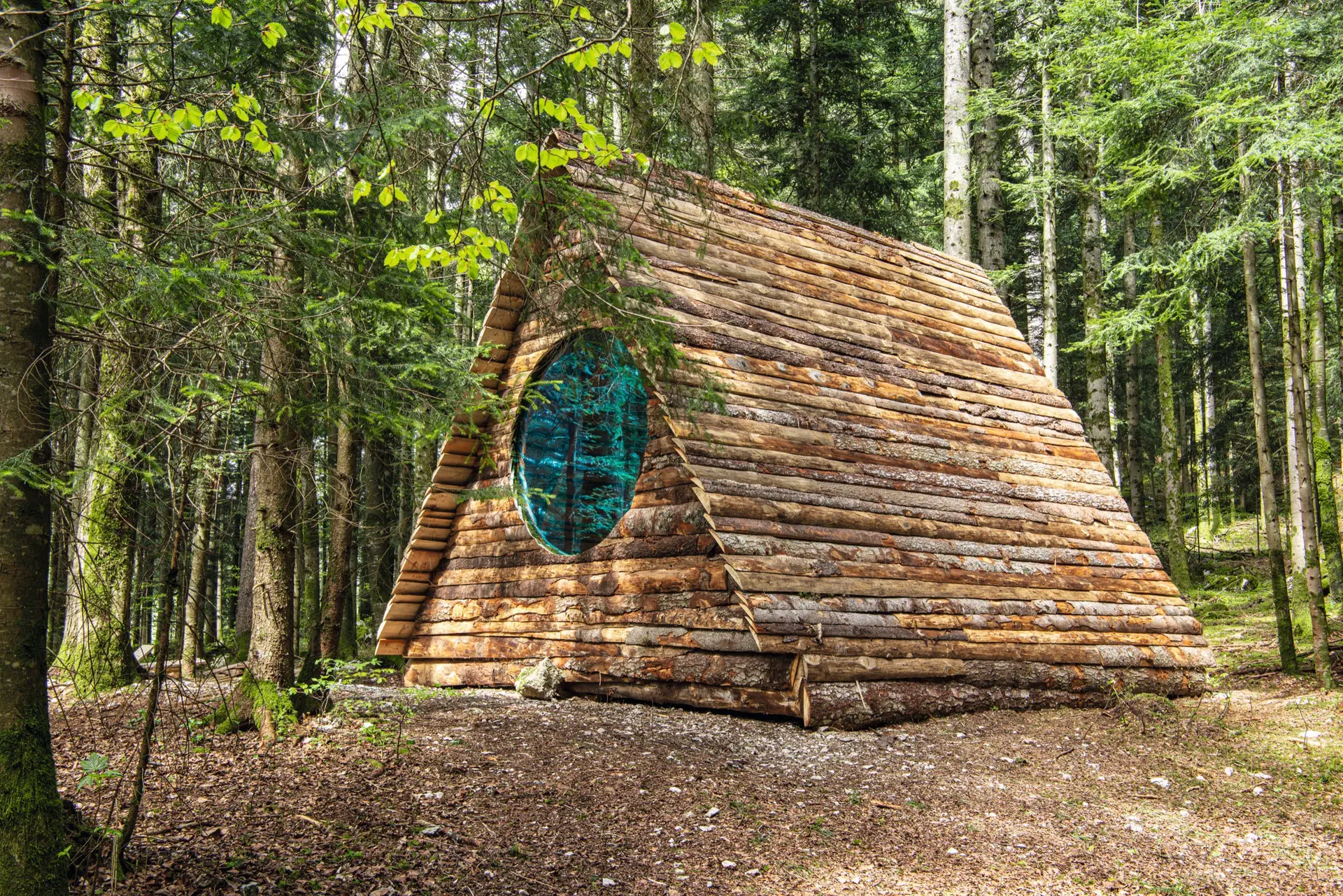
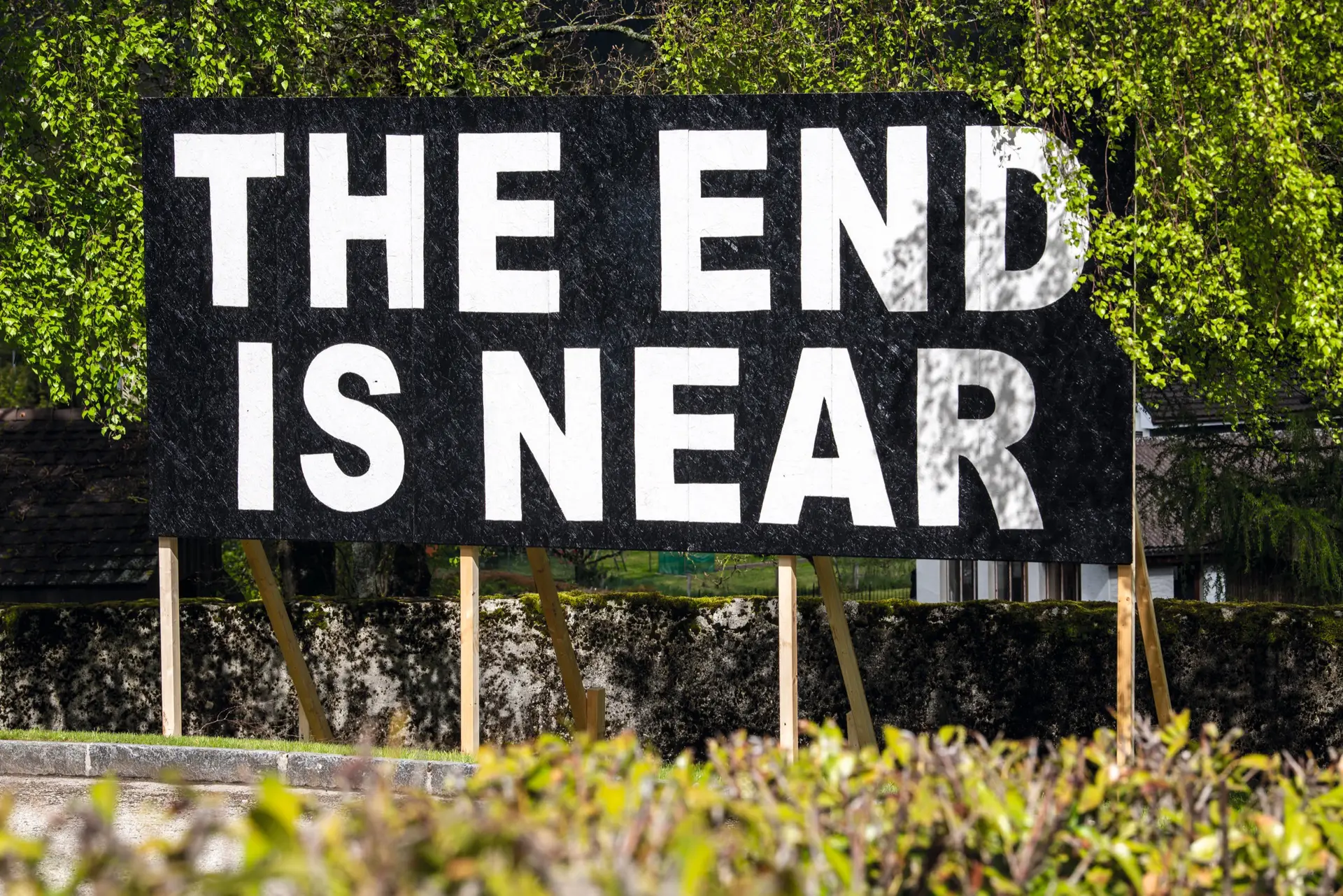
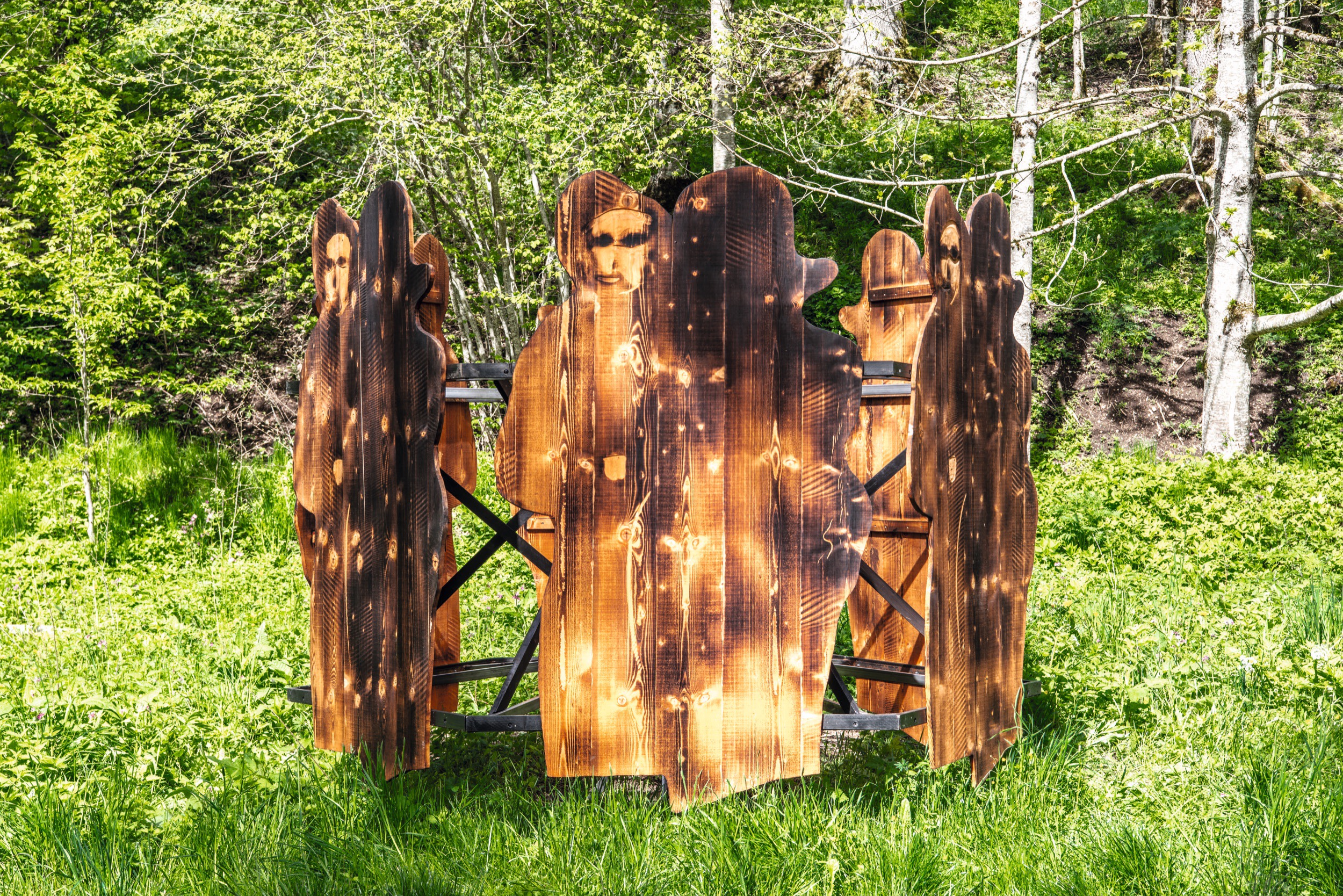
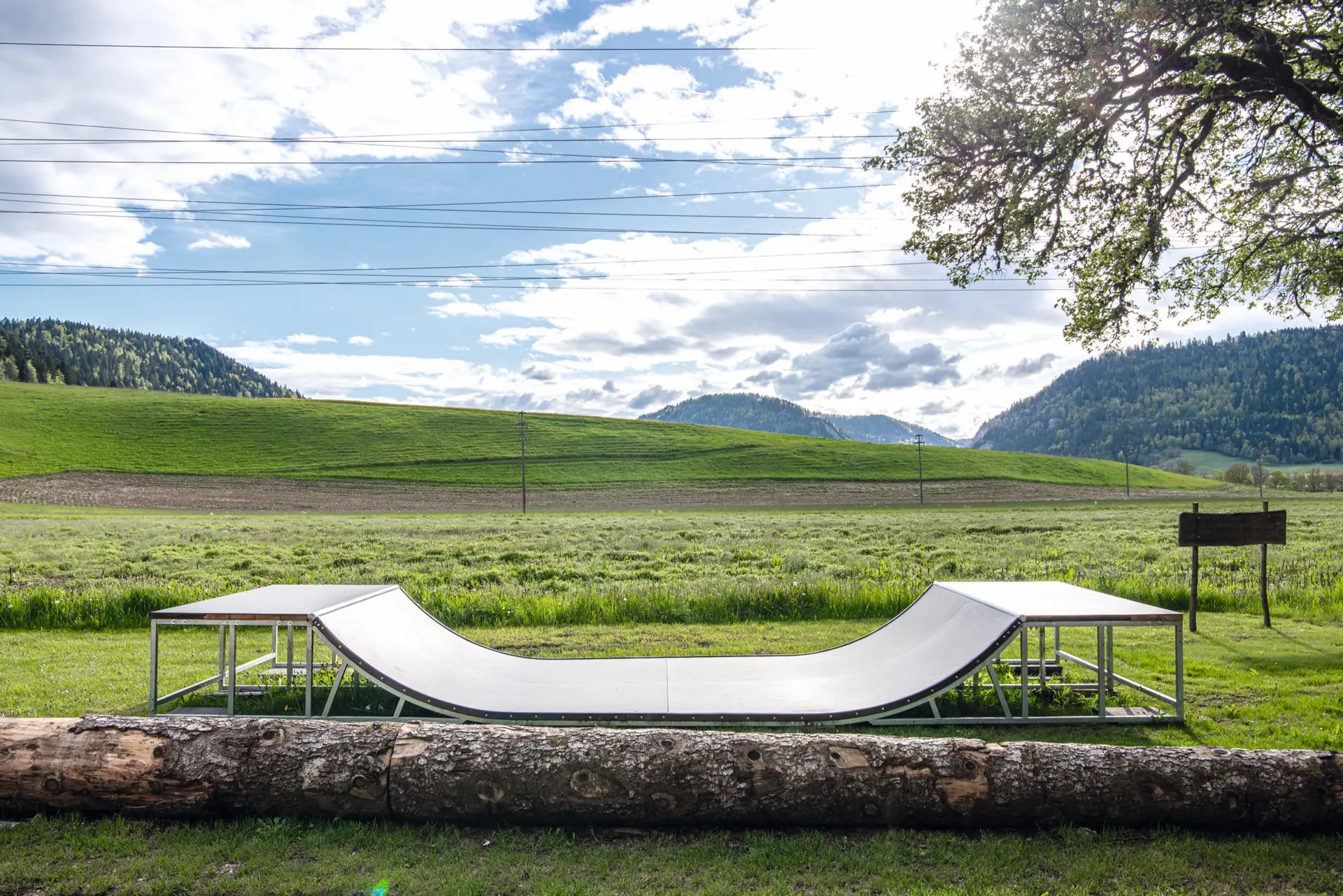
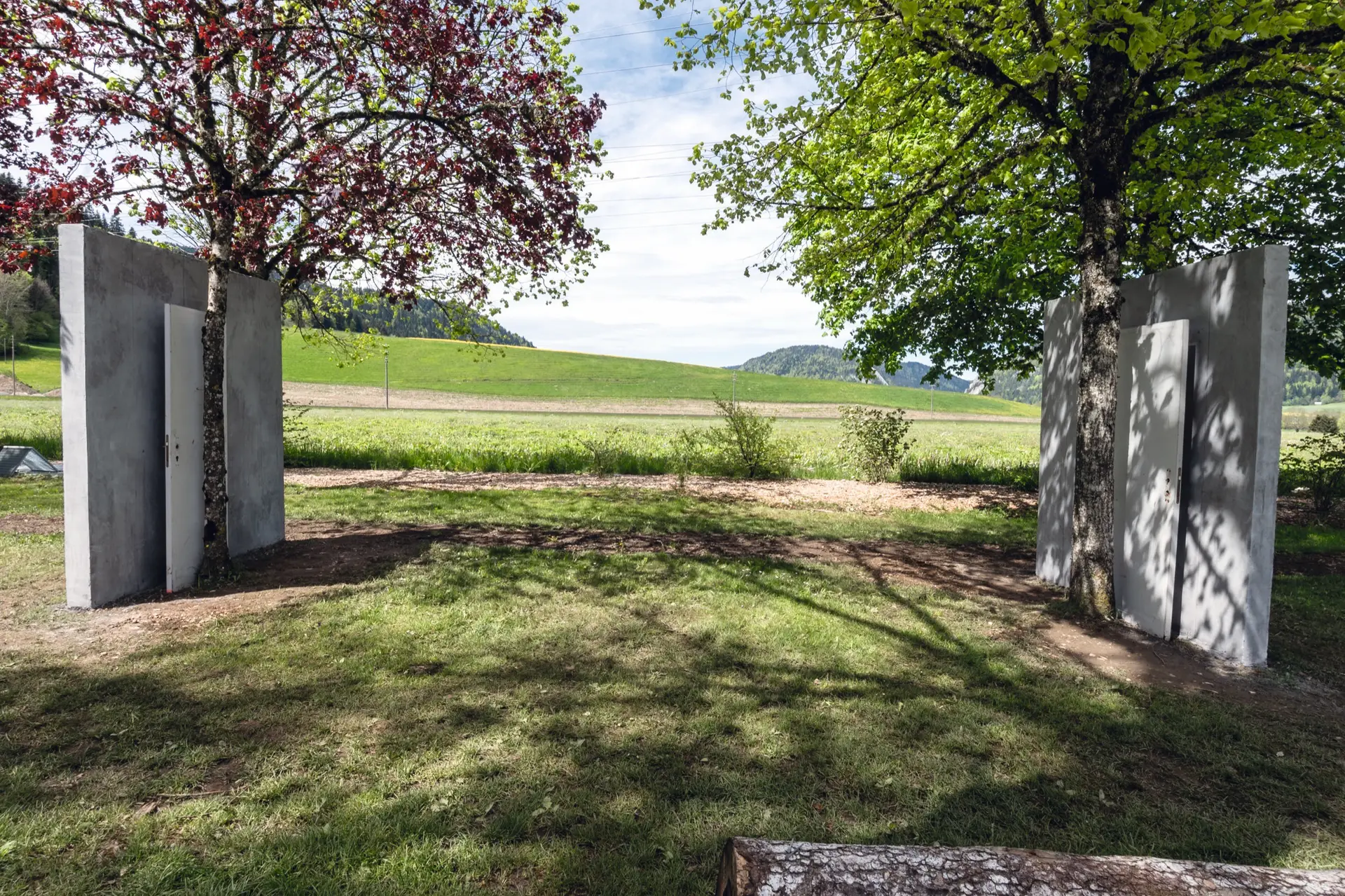
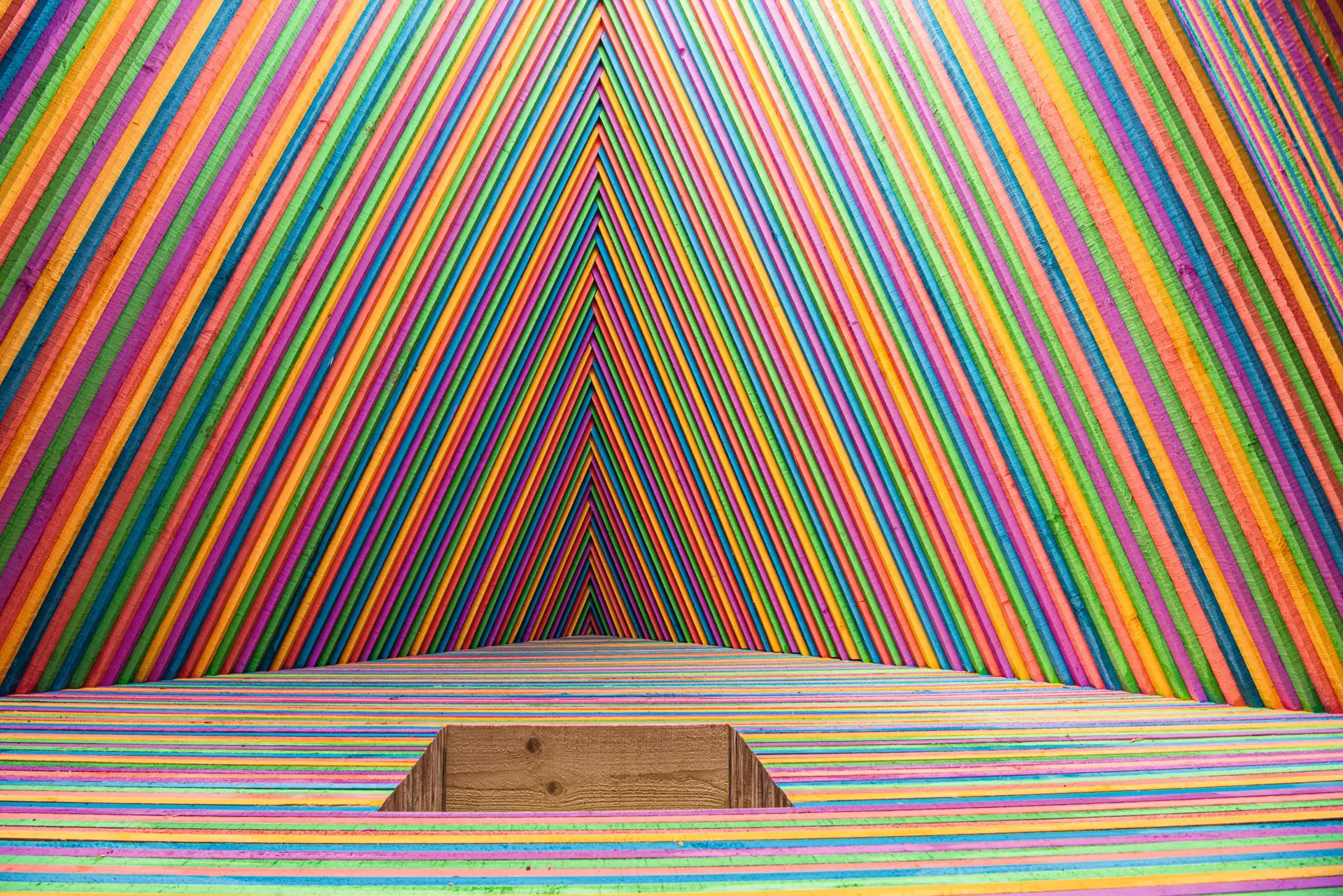
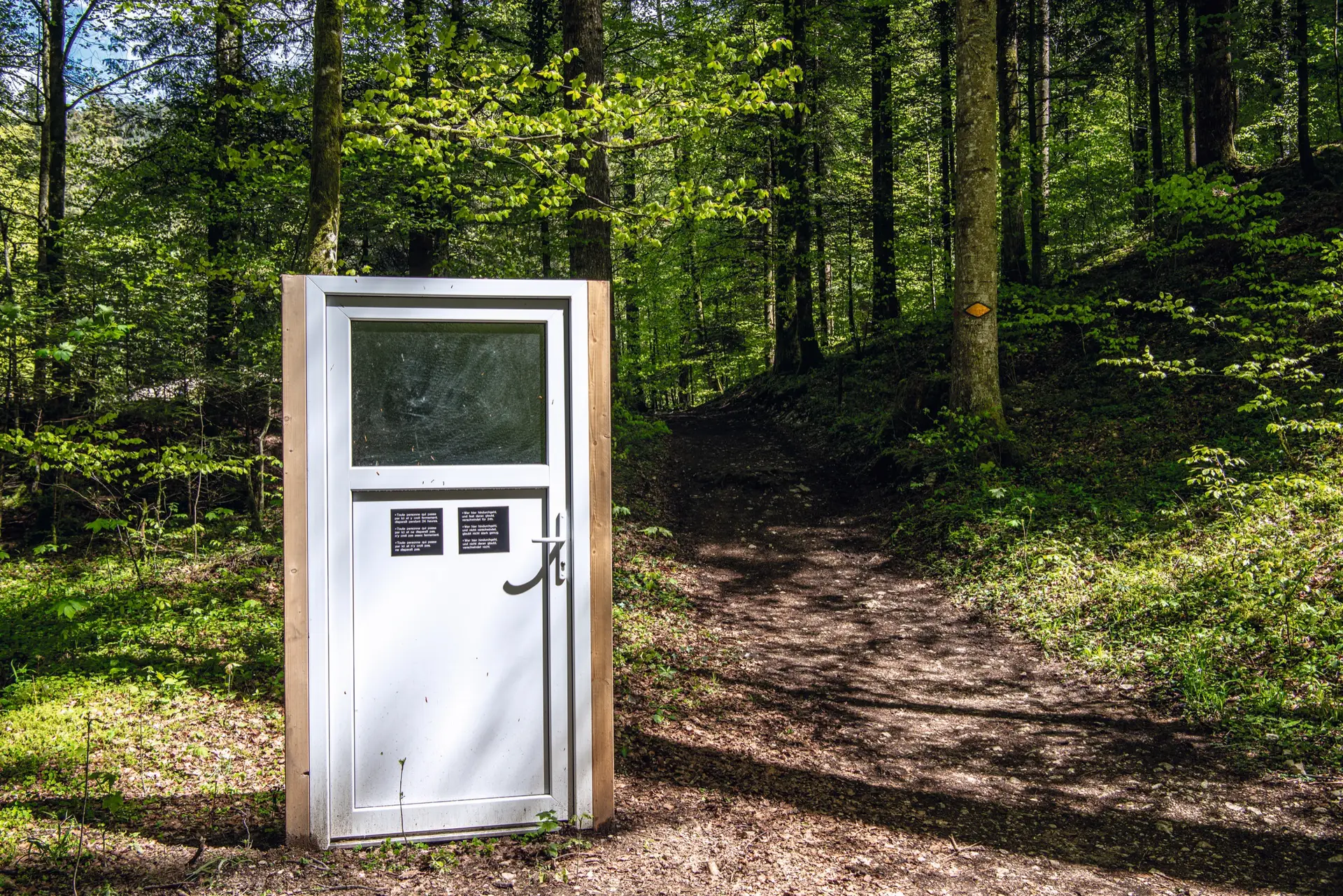
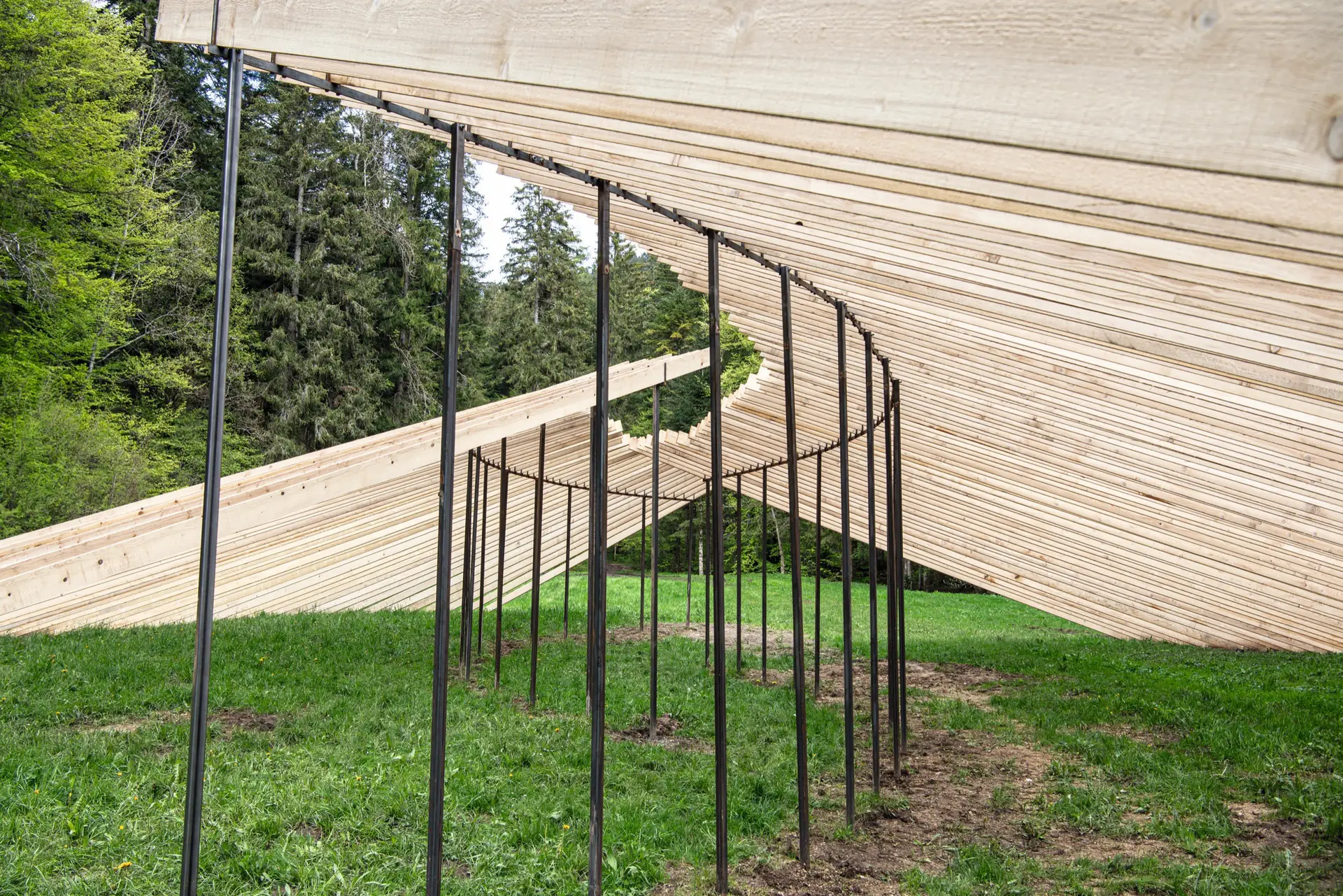
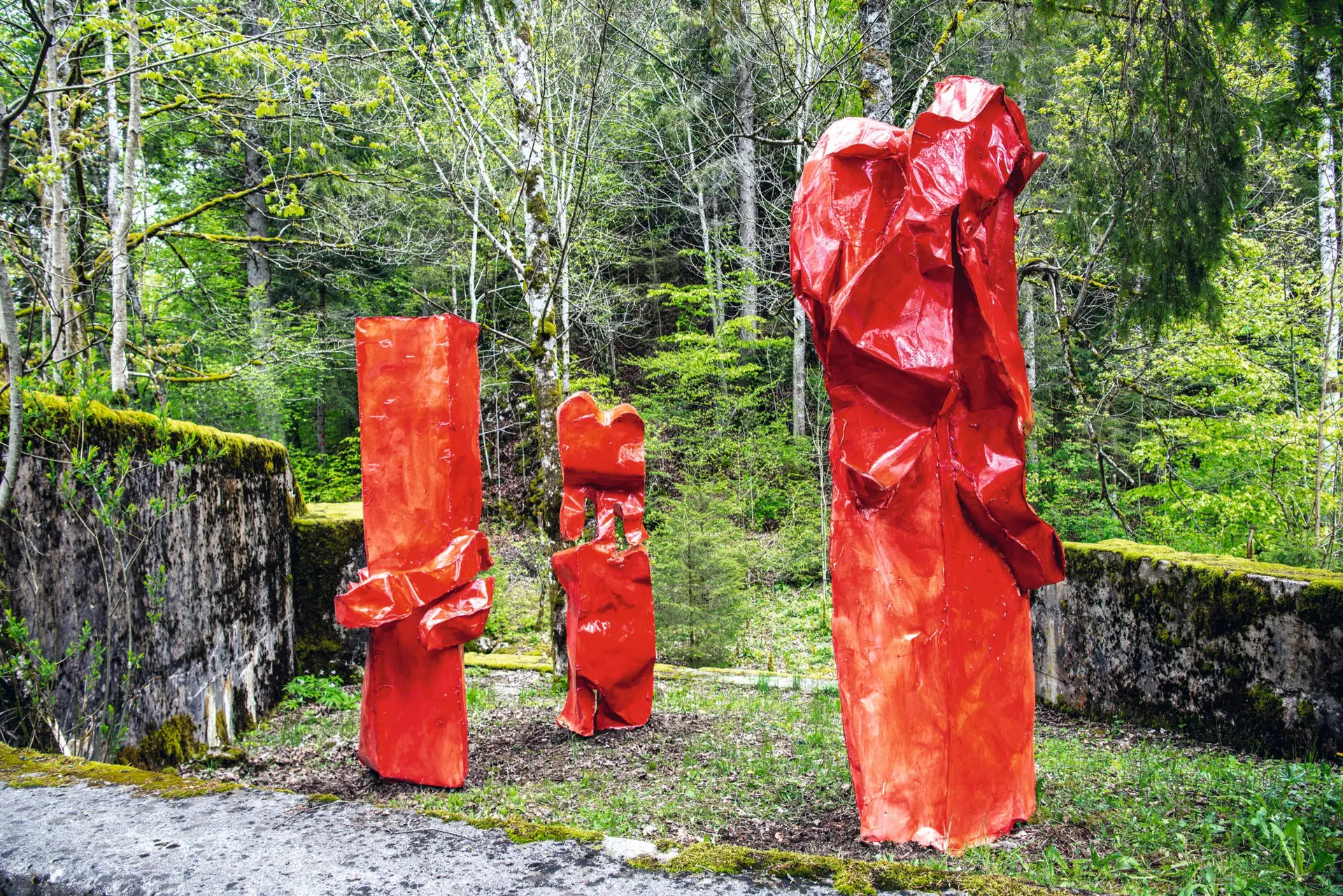
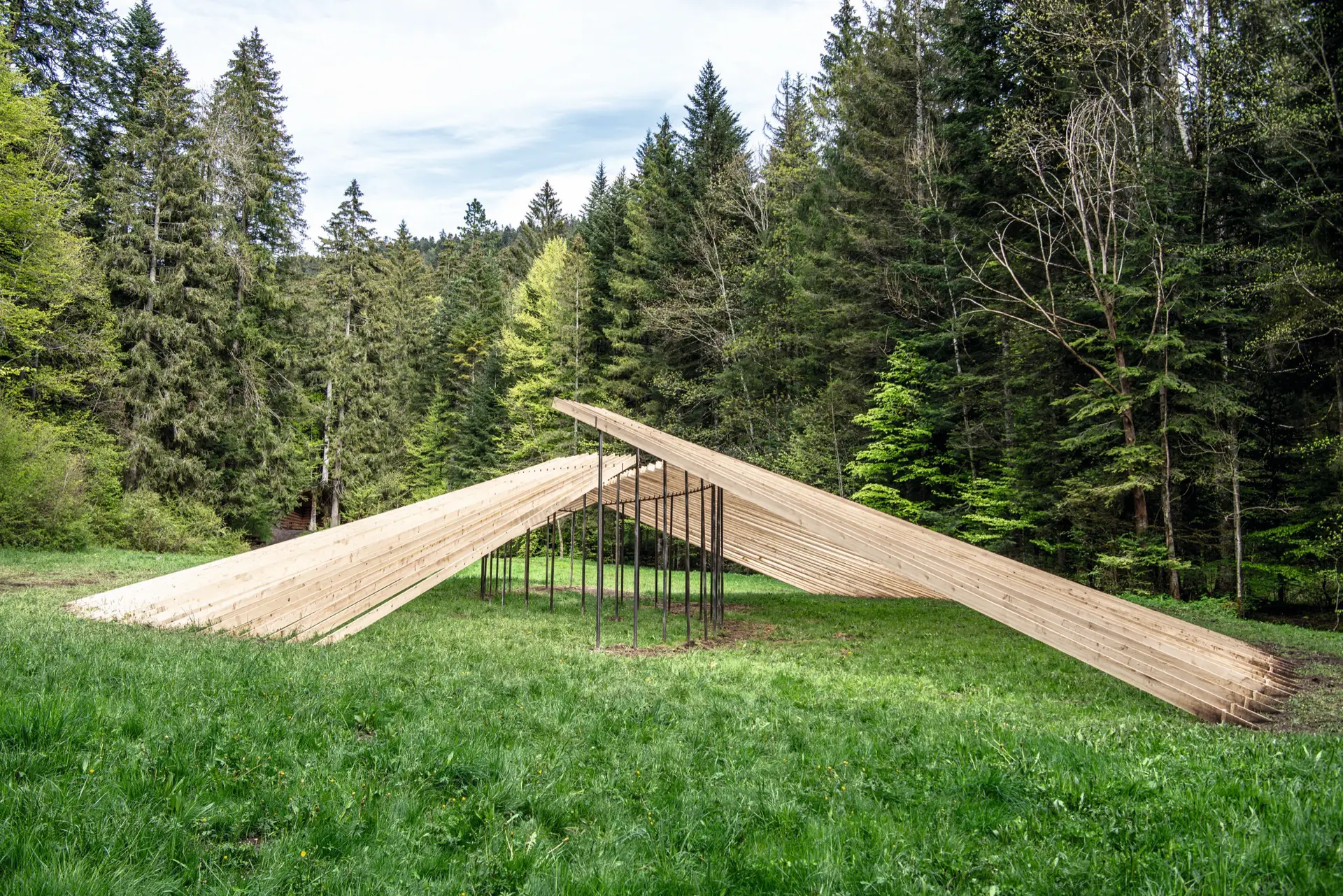
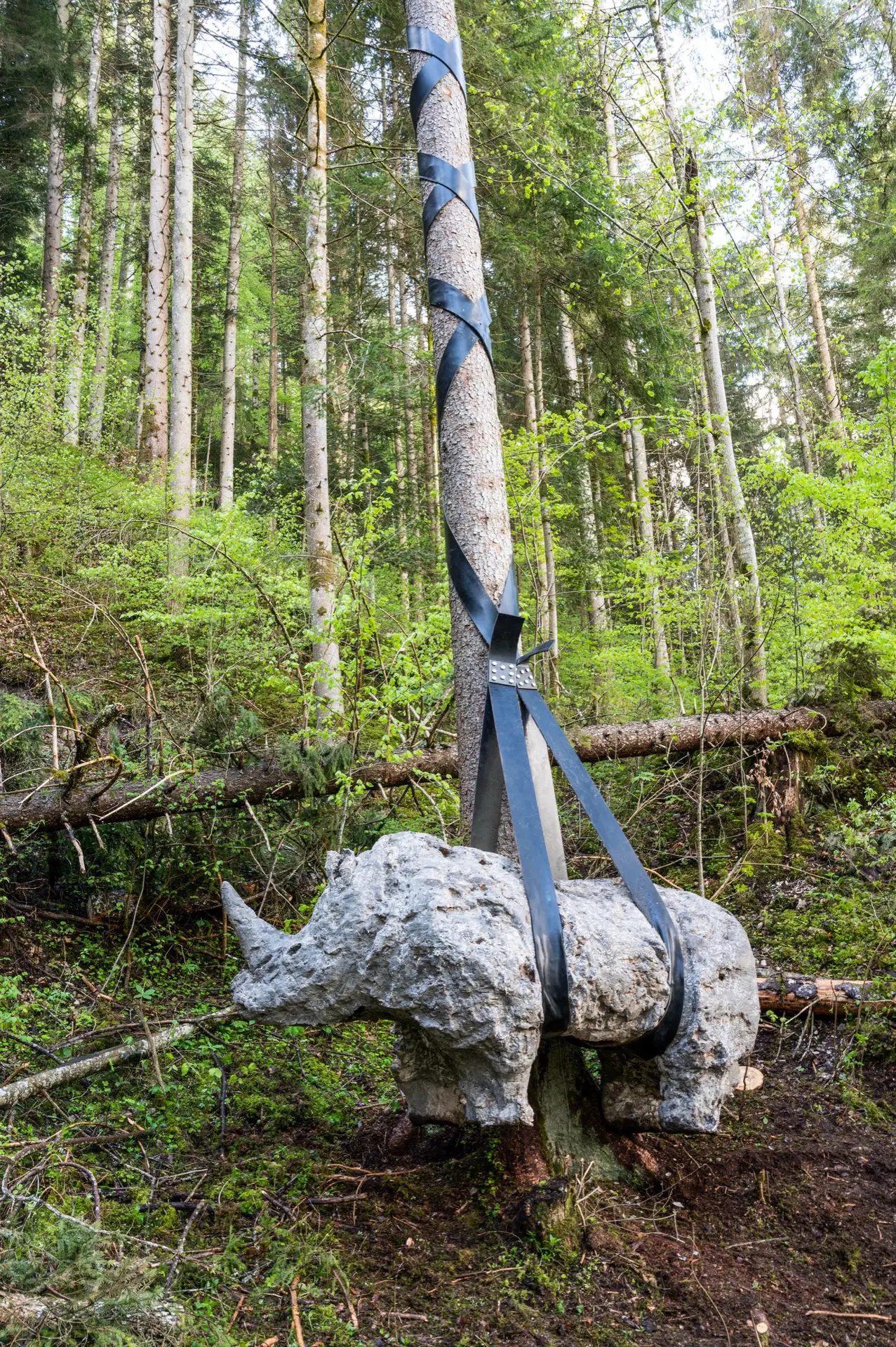
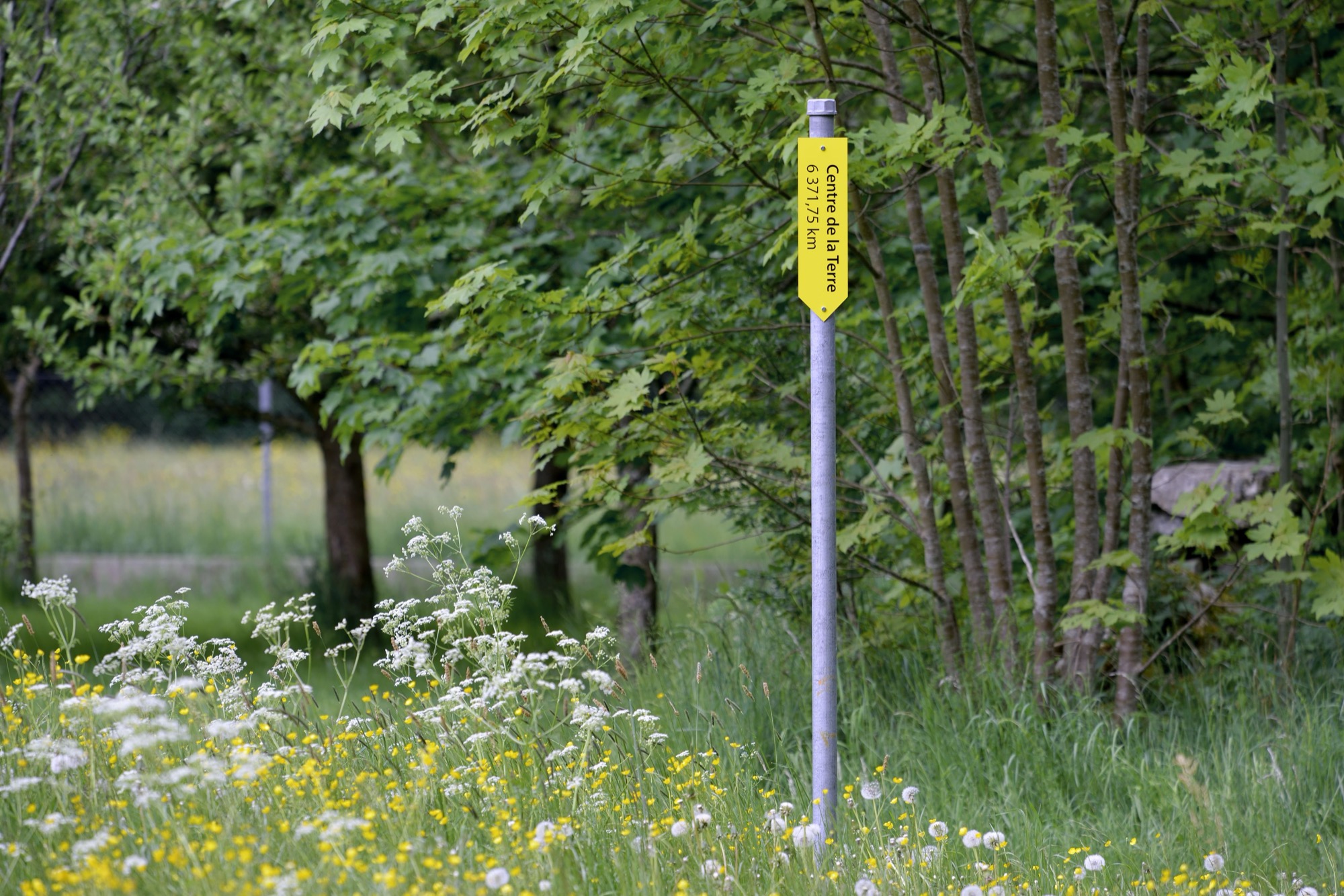
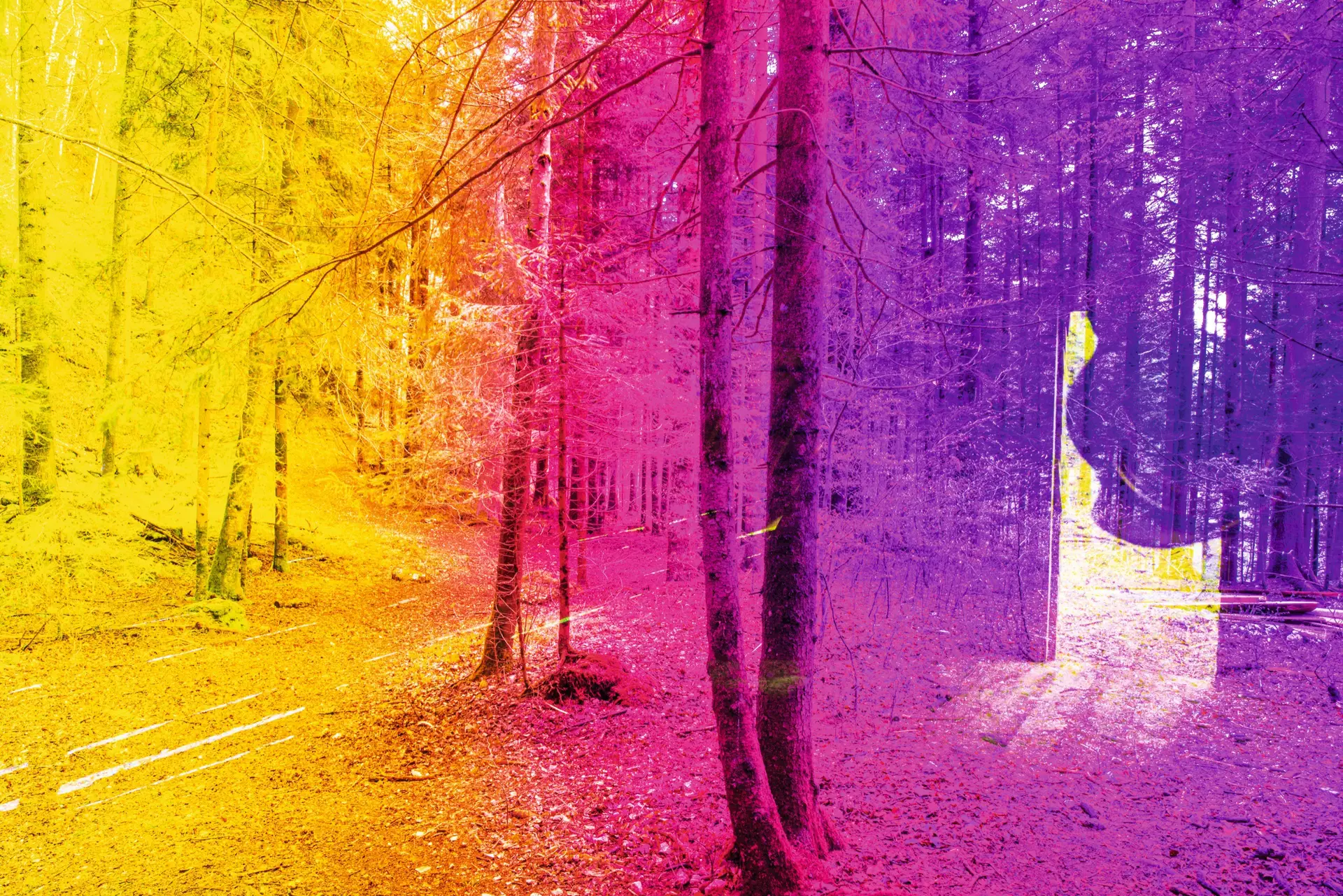
Concept
From the very first exhibition, in 1985, the founders defined the concept that was to characterise future exhibitions at Môtiers – and which remains valid today. It can be summed up in a few points:
Plural encounters
We decided that Môtiers would be a place for encounters: encounters between well-known artists and younger ones, encounters between the country’s four linguistic regions, encounters between visitors from all over Switzerland, encounters between families and specialists, a place where you could come with sole shoes.
Regional history in the background
Even if it is customary to propose a theme for today’s exhibitions, we are keeping to the idea that we must leave artists complete freedom in the choice of their work. On the other hand, during the visits to the sites, we insist on the history, geography, sociological and economic problems of our valley, so that the artists can immerse themselves in them. Few of them fail to refer to what has been presented to them.
As a result, exhibition after exhibition has produced works that allude to Rousseau, absinthe, watchmaking, asphalt and, more generally, the surrounding Jura landscape, with its waterfalls, caves, rivers and craggy rocks, around an 18th-century village and a 10th-century monastery.
The people of the village at the heart of the project
Finally – and this is probably one of the elements of the concept that is closest to our hearts – we have always been keen on sharing our passion for art with the people of the village. In all modesty, we think we’ve succeeded. Artists can exhibit in private gardens, garages, fields, on facades or shop windows.
Ask for help, borrow a tool or a wheelbarrow, and the people of Môtiers are happy to oblige. Over a hundred volunteers are on hand to welcome visitors over the three months.
The visitors
They come from all over Switzerland, France and Germany. Each year, over 30,000 people (re-) discover the route.
In a nutshell
The Môtiers exhibitions, of which the one in 2026 will be the ninth, have acquired an important place in the Swiss artistic landscape. Playing on the possible relationships between art and geography, history, heritage and nature, they appeal to a large number of art-lovers, often with their families, and offer young and established artists the chance to create work outside museums and galleries.
They also help to showcase a somewhat remote region, which is ready to mobilise on such occasions.